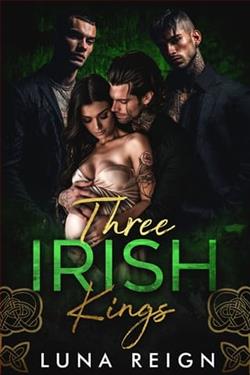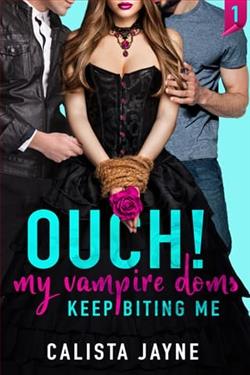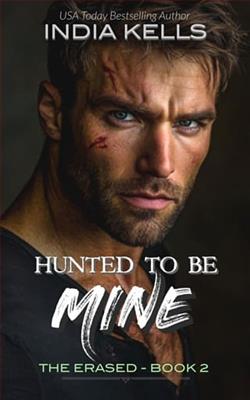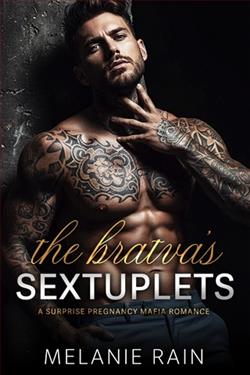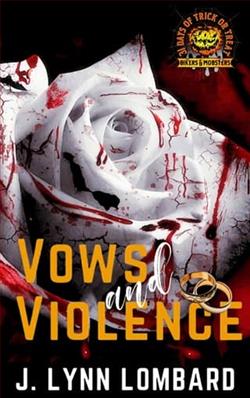Page 22 of The Christmas Spirits on Tradd Street
I frowned at him. “You were saying something about why Marc thought the diamonds were hidden at Gallen Hall.”
“Right,” he said, forcing his gaze away from what I was doing. “Joseph had copied into his diary what looked like some kind of weird drawing, almost like a doodle. Apparently while at a party at the Vanderhorst home on Tradd Street, Joseph did some snooping and found a really old piece of paper with these odd scribblings in Mr. Vanderhorst’s desk, and Joseph copied them into his diary. Marc only showed the copy to me once—and I thought it looked like hieroglyphics, but Marc said that was proof the Vanderhorsts had hidden something valuable on one of their properties. I mean, why go through the trouble of using codes if they weren’t hiding something valuable, right? Marc assumed it was the diamonds because of the story of Captain John Vanderhorst being entrusted with the diamonds after the war and then turning up in Charleston without them.”
“Yes, well, we now know that Marc did, actually, have the diamonds and he hid them in my grandfather clock. So why does he think there’s something else that might be hidden in the mausoleum?”
“Because when Marc found out that Jack was working on another book, he thought it could be a sequel, and Marc wanted to make sure that he knew everything and that Jack wouldn’t find anything new. So he went back to his notes and saw that on that same page in Joseph’s diary, he’d also copied the words ‘French treasure.’ Not sure what the ‘French’ part means, but ‘treasure’ is certainly clear. Marc thought the same thing. The Confederate diamonds weren’t from France, which is probably why he dismissed this particular notation when searching for the diamonds.”
I bent down to look into the box of oranges, using my ruler to check the placement of the cloves. “And?” I prompted, feeling his eyes on me again.
He cleared his throat. “Marc hasn’t figured out what the drawing means—I know that much. He didn’t ask for my help, either, because then he’d feel obliged to share any treasure with me. But that didn’t keep him from looking. He pretty much tore apart Gallen Hall and used metal detectors over all the floors and walls, looking for whatever might be a ‘French treasure.’”
I’d finished with the oranges and begun to pace, picking up stray lint from the bare wood floor as I walked. “I’m afraid you’ve lost me. All the diamonds are accounted for. There’s no more treasure. And you still haven’t said what this has to do with the mausoleum.”
He sat up and leaned his elbows on his knees. “You’re wrong. Maybe not about the diamonds, but definitely about there being another treasure hidden somewhere.”
“I don’t...”
He held up his hand. “Before Marc and I had our falling-out, we were in the library at Gallen Hall, smoking cigars and drinking bourbon. Marc never could hold his liquor, which is the only reason I can think of for him telling me this—and I seriously doubt that he knows he did, or he’d have burned down the house and everything else once it all belonged to me.” He stopped, rubbing his sore arm.
“So what did he tell you?”
“He said he had proof that there was more hidden treasure on Vanderhorst property.”
I frowned. “So you think he found another diamond?”
“No. He would have gloated about that for weeks. Several months ago when he found out that Jack was already at work on another book, he went to the archives where he’d found Joseph Longo’s diary and found personal correspondence belonging to the Vanderhorst family from 1781, which was during the occupation of Charleston, in case you weren’t aware.”
I just nodded, not wanting to show that I had no idea to what he was referring.
“He stole the letters from the archives, too, just in case they contained something Jack could use for his book. But when Marc read them, he found something else entirely.”
I was seething now, on Jack’s behalf. We’d always known Marc was a weasel, but we’d thought we’d seen the bottom of his depravity. Apparently, we hadn’t. “What?” I prompted.
“It was a mention that a room needed to be prepared for an important visitor from France who wished to lay a wreath on the tomb of the Vanderhorsts’ daughter, Marie Claire. Marc pointed out that the Vanderhorsts, like most of the colony of South Carolina at that point, were loyalists. And the French were bitter enemies of the British. So why would a Frenchman be visiting the Vanderhorsts? To lay a wreath on the tomb of a daughter who’d never existed?”
Anthony raised an eyebrow. “Marc showed me the family tree—he was quite obsessed with the idea of more treasure to find and had made his own very complicated drawing—and the Vanderhorsts had six sons, only two of whom lived to adulthood. And let’s not forget the words ‘French treasure’ Marc had seen in Joseph’s diary.”
I blinked. “So, between the drawing and the letter with incorrect information, he thought a treasure was hidden somewhere on Vanderhorst property? It seems a bit of a stretch.”
“Yeah—so did finding the Confederate diamonds in your house.” He gave me a sardonic smile. “But there’s more. Marc thinks there’sa connection to the drawing with some of the bricks inside the mausoleum. Marc’s already dug around the floor of the mausoleum and searched and searched but come up empty-handed. He wanted to tear the entire mausoleum down to do a better search, but the preservation people put a stop to it. Apparently, it’s protected by the Archaeological Resources Protection Act, which requires federal permits for excavation or removal of material remains of past human life or activities. We can’t touch it. Not legally, anyway.”
“But you’ve searched, surely.”
Anthony’s eyes darkened. “I’ve tried. But there’s someone... something... keeping me out. That’s the weirdest thing—because I’d been inside the mausoleum many times in the past without anything strange happening. But then all of a sudden when I tried to enter to search one more time, things would... happen to me. I’d feel punches and scratches. And...” He stopped, giving his head a firm shake as if trying to remove a painful memory. “A stone lid on one of the crypts slid partially off and broke, and one of the pieces barely missed landing on my foot. Do you know how heavy those lids are? They don’t just slide off. I wanted to believe that I’d imagined it all, but there were purple bruises all over me.” He looked away for a moment before forcing his gaze back to me. “And I had bloody scratch marks on my back. Under my clothes. Like someone had raked their fingernails over bare skin.”
I didn’t even try to pretend I had no idea what might have been responsible. “When was this?” My voice shook.
“It started around the time we had all those heavy rains this past spring, remember?”
Of course I did. That was when my back garden sank, revealing the hidden cistern. Unburying what had been covered for at least a century.
I nodded, my thoughts running a marathon down different paths, trying hard to avoid the most obvious. “And you somehow found out that the nineteenth-century Vanderhorsts used some of the bricks from the mausoleum and old cemetery wall to build the cistern at their Tradd Street house.”
“Yeah. By accident. Apparently, Marc hadn’t destroyed all thedocuments and letters he stole from the archives. He left a bunch of them in a shoebox in a garbage can. Luckily, when I discovered I was the hapless owner of a failed winery and took possession of the premises, I found the can in the carriage house. Apparently, whoever was in charge of taking out the garbage had forgotten this one bin.”
He shook his head wearily, and I felt sorry for him, for having grown up with a brother like Marc Longo. He continued. “Feeling angry, and wanting some kind of evidence that Marc was doing something illegal, I went through the papers. There was a lot there, all stolen by Marc from the archives—nothing to do with him or any of his business dealings, sadly—and ready to go out in the trash. Which explains why I couldn’t find anything about the plantation when I tried to do my own research. That’s how I found out about the bricks. I read through everything—but it was just a bunch of ledgers with costs of all the building materials and furniture for both Vanderhorst properties, and a housekeeper’s journal about how much tea and sugar she measured out on a daily basis. The only thing interesting I learned was that there’d been an older mausoleum on the same site as the one that’s there now, but for some reason it was torn down and then rebuilt within two years of the original. They also replaced the brick wall that surrounded the cemetery with an iron fence at the same time. The Vanderhorsts were building a house on Tradd Street at the time—probably an earlier version of your house now—and the demolished mausoleum and wall would have been a cheap source of bricks.”
I raised my eyebrows. “Why would they have done that? Is the new one bigger?”








